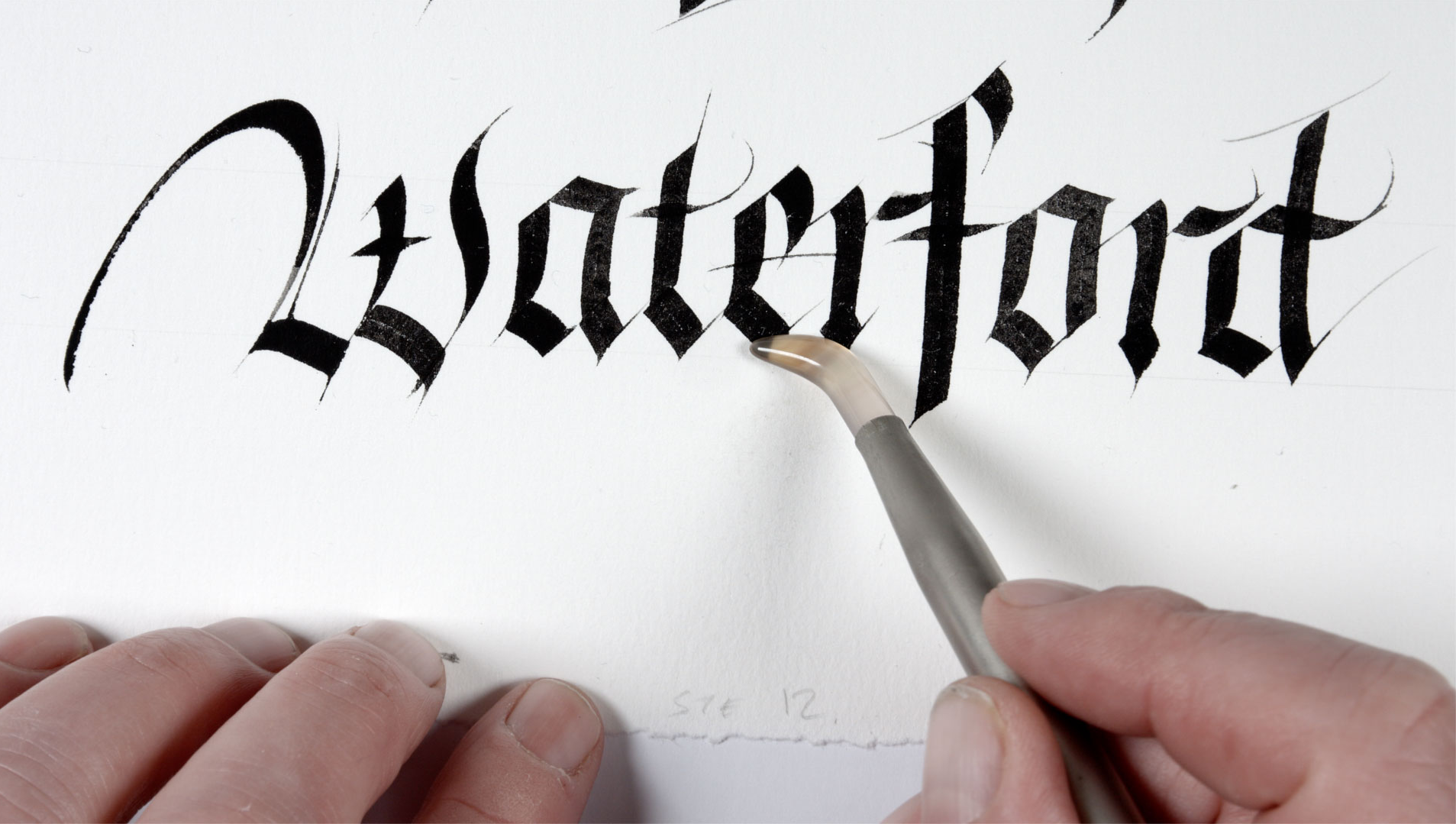
With the re-opening of the award winning Medieval Museum this coming Monday 29th June at 09:15, we’d like to continue with more history about Ireland’s oldest city, ‘Veðrafjǫrðr’ (Waterford).
The Wool Trade in Waterford in the Middle Ages
“No strange merchant shall buy corn, hides or wool of a stranger in the city of Waterford but only from the citizens.” – Great Charter Roll of Waterford.
Wool and hides were the chief exports through the port of Waterford in the Middle Ages. The medieval records show that Waterford and its neighbouring port of New Ross exported more wool than all the other ports in Ireland combined. Medieval monarchs promoted towns and trade because they provided much needed revenue through taxation and merchants especially and were an important source of ready cash. In 1275, King Edward I introduced the Great New Custom, a tax on the export of wool and hides, and this was used to service the enormous loans he received from Italian bankers to finance his wars against Scotland. The collection of the Great New Custom was supervised locally by city council officials and the representatives of Italian bankers who had bankrolled Edward’s wars. As most of the Italian bankers came from Lombardy in Northern Italy they were referred to locally as ‘Lombards’, a term which in time became a surname. Between 1371 and 1569, there were twelve mayors of Waterford named Lombard and William Lombard, the mayor of Waterford in 1373, is actually depicted on the Great Charter Roll of the city. In the 16th century, Peter Lombard of Waterford – an uncle of the famous Luke Wadding – was Archbishop of Armagh and has the distinction of leading the Church’s campaign to condemn the philosopher, Galileo Galilei.
The importance of the wool trade in Waterford was revealed by the discovery by archaeologists of a number of objects associated with the trade during the course of both the city centre excavations and those around the site of the Medieval Museum where a very beautiful 13th century seal matrix was found. The handle is pierced so that it could be suspended from a belt. It is made from lead and seals like this would have been used in the medieval period in making agreements between merchants or craftsmen. On the circular face of the seal is the design of a bird surrounded by the Latin inscription Signullum Gafin Qu – meaning the seal of Gavin Quemeford. The letters are reversed so that when the face of the seal was pressed against hot wax the name could be read. Quemeford or Comerford was a common name in Waterford in the Middle Ages. In 1448, Foulke Comerford was mayor of the city. The Gavin Quemeford in question who owned this seal was probably not a merchant but a weaver. Merchants in medieval cities were of higher status than artisans or craftsmen and generally would have used seals made from silver.
The wool trade was strictly controlled. In order to protect wool merchants it was ordered in the 1232 charter of King Henry III to Waterford that foreign wool merchants could only buy from Waterford wool merchants and not directly from the artisans or craftsmen in the city.
At times, however, Waterford merchants were not slow in challenging regulations which restricted trade in other ports. In 1400, in order to support the town of Calais which was the last remaining English outpost in France, the English Parliament ordered that merchants trading with the continent do so through that port. In 1483, this was challenged by the merchants of Waterford when one of their ships exporting wool was confiscated for bypassing Calais. Using the city charters the Waterford merchants took their case to London and it was upheld that an English Act of Parliament was not binding on Ireland. However, they eventually lost the case on a technicality.
The Waterford Rug
As well as exporting raw wool Waterford merchants also catered for the demand for woollen cloth. One of the chief exports from Ireland was woollen rugs, cloaks, shawls or mantles. They were woven in people’s homes and the wages of those working in the various stages of production were strictly regulated. Because of their warmth the cloaks were worn by all classes of people and could be found as far away as Avignon, Hamburg, Oslo and Rome. On the continent, where huge profits could be made on the sale of these rugs, they were known as Waterford Rugs because most of them were exported through that port. In 1526, Waterford City Council passed a law allowing only merchants of the city, and not foreign merchants, to sell friezes and mantles made in the areas around the city.
Visiting dignitaries were very often presented with a Waterford Rug. As late as 1601, Sir Robert Cecil, Queen Elizabeth’s Secretary of State, was gifted by the mayor of Waterford “a pair of woollen bed-coverings and two small roundels of aqua vitae [whiskey] of our making, which you shall receive at the hands of the bearer Nicholas Wyse”.
So don’t forget, we’re back and open to the public from Monday 29th June at 09:15, ‘we’ve been expecting you’.
#LoveWaterford #KeepDiscovering #Medieval #History #Wool #Waterford


